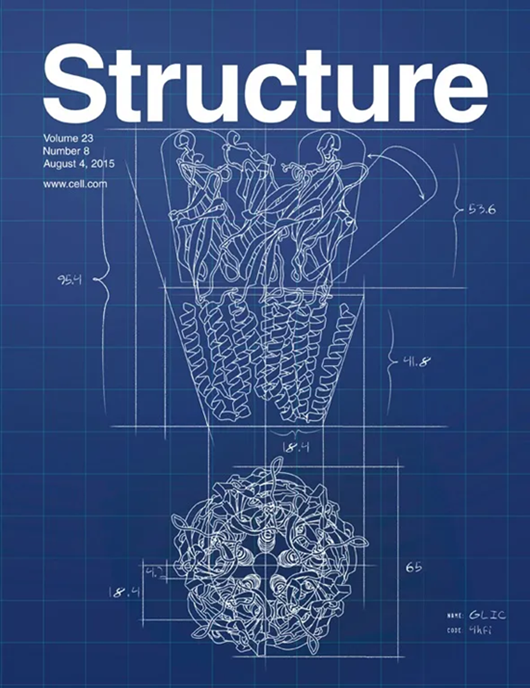组装基因毒性大肠杆菌素的人类微生物源性聚酮合成酶的结构研究
IF 4.3
2区 生物学
Q2 BIOCHEMISTRY & MOLECULAR BIOLOGY
引用次数: 0
摘要
大肠杆菌素是一种源自人类微生物组的基因毒素,通过破坏宿主肠道上皮基因组促进结直肠癌的发生。虽然大肠杆菌蛋白是通过非核糖体肽合成酶(NRPS)-聚酮合成酶(PKS)混合途径合成的,被称为PKS或clb,但其生物合成酶的结构细节仍然有限,阻碍了我们对其生物合成和临床应用的理解。在这项研究中,我们报道了使用底物模拟交联剂在不同反应状态下捕获的两种产生大肠杆菌素的PKS酶ClbC和ClbI的低温电镜结构。我们的结构分析揭示了ClbC和ClbI的载体蛋白(CP)结构域与它们的酮合酶(KS)结构域的结合位点。此外,我们发现ClbI与其上游酶ClbH之间存在一种新型的NRPS-PKS对接相互作用,该相互作用由c端肽ClbH和ClbI的二聚体界面介导,并建立了1:2的化学计量。这些发现促进了我们对大肠杆菌蛋白装配线的理解,并为nrpps - pks天然产物的生物合成机制提供了更广泛的见解。本文章由计算机程序翻译,如有差异,请以英文原文为准。

Structural study on human microbiome-derived polyketide synthases that assemble genotoxic colibactin
Colibactin, a human microbiome-derived genotoxin, promotes colorectal cancer by damaging the host gut epithelial genomes. While colibactin is synthesized via a hybrid non-ribosomal peptide synthetase (NRPS)-polyketide synthase (PKS) pathway, known as pks or clb, the structural details of its biosynthetic enzymes remain limited, hindering our understanding of its biosynthesis and clinical application. In this study, we report the cryo-EM structures of two colibactin-producing PKS enzymes, ClbC and ClbI, captured in different reaction states using a substrate-mimic crosslinker. Our structural analysis revealed the binding sites of carrier protein (CP) domains of the ClbC and ClbI on their ketosynthase (KS) domains. Further, we identified a novel NRPS-PKS docking interaction between ClbI and its upstream enzyme, ClbH, mediated by the C-terminal peptide ClbH and the dimeric interface of ClbI, establishing a 1:2 stoichiometry. These findings advance our understanding of colibactin assembly line and provide broader insights into NRPS-PKS natural product biosynthesis mechanisms.
求助全文
通过发布文献求助,成功后即可免费获取论文全文。
去求助
来源期刊

Structure
生物-生化与分子生物学
CiteScore
8.90
自引率
1.80%
发文量
155
审稿时长
3-8 weeks
期刊介绍:
Structure aims to publish papers of exceptional interest in the field of structural biology. The journal strives to be essential reading for structural biologists, as well as biologists and biochemists that are interested in macromolecular structure and function. Structure strongly encourages the submission of manuscripts that present structural and molecular insights into biological function and mechanism. Other reports that address fundamental questions in structural biology, such as structure-based examinations of protein evolution, folding, and/or design, will also be considered. We will consider the application of any method, experimental or computational, at high or low resolution, to conduct structural investigations, as long as the method is appropriate for the biological, functional, and mechanistic question(s) being addressed. Likewise, reports describing single-molecule analysis of biological mechanisms are welcome.
In general, the editors encourage submission of experimental structural studies that are enriched by an analysis of structure-activity relationships and will not consider studies that solely report structural information unless the structure or analysis is of exceptional and broad interest. Studies reporting only homology models, de novo models, or molecular dynamics simulations are also discouraged unless the models are informed by or validated by novel experimental data; rationalization of a large body of existing experimental evidence and making testable predictions based on a model or simulation is often not considered sufficient.
 求助内容:
求助内容: 应助结果提醒方式:
应助结果提醒方式:


